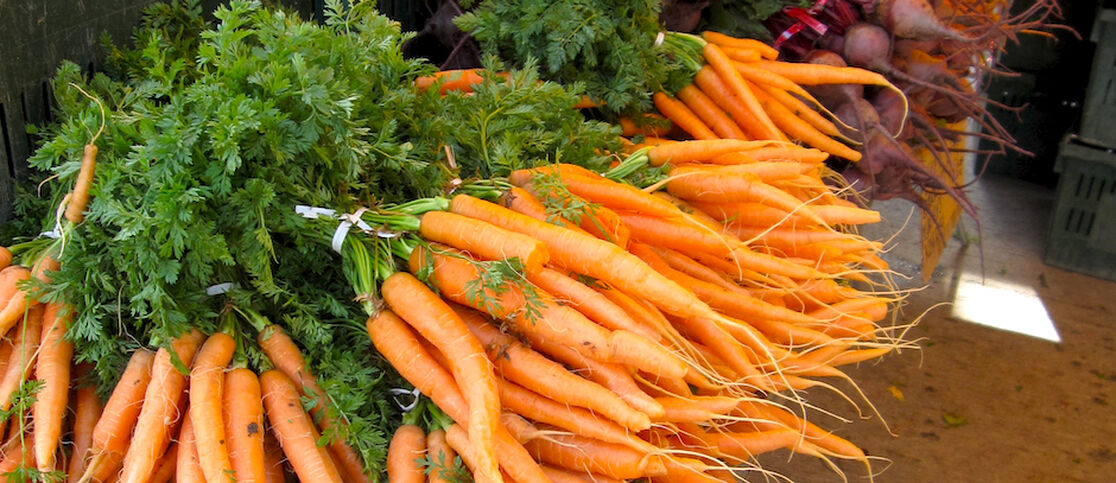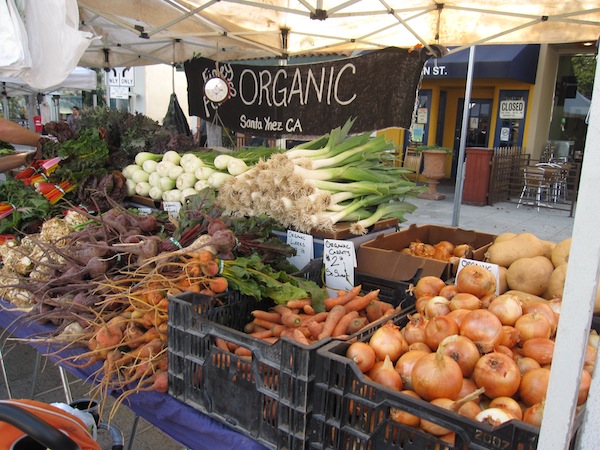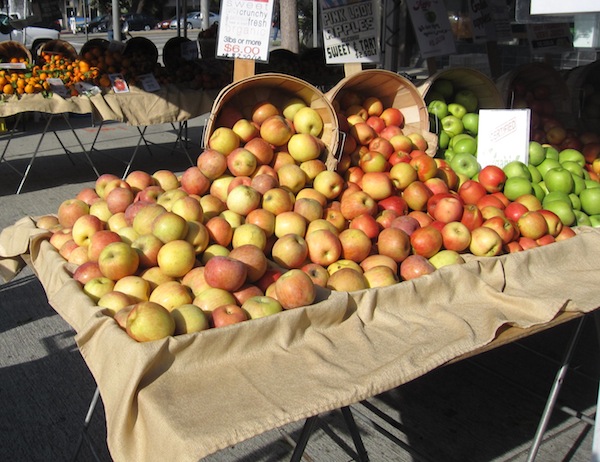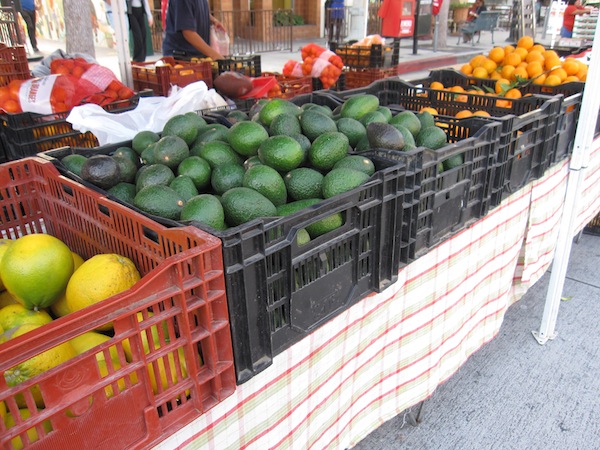It’s October. Crisp air. Changing leaves. And a tempting fall harvest at the farmers’ markets. If you’re like us, you can’t wait to grab your canvas tote, throw on a scarf, and sip some cider as you shop for the week’s dinners. But sometimes many vendors with the same produce make it hard to know how to choose which are the best quality fruits and vegetables.
Do you look for a certain color?
Smell?
Eat a sample?
We say “yes” to eating the sample. But we’re definitely not sure about the rest. So, here’s a cheat sheet for choosing the best produce this season.
Root veggies. As the temperatures dip, root veggies like beets, parsnips, and turnips make great additions in hearty meals like stew or a roasted side dish. Look for fresh, firm veggies with bright greens attached. And for maximum flavor smaller turnips and parsnips are better than big ones.
Kale. This hearty, cancer-fighting green isn’t just great as a chip or in smoothies. It’s full of beneficial fiber and makes a great salad, soup addition, or sautéed side. Look for deep green leaves that are springy and don’t show signs of wilting or discoloring, plus a stem that isn’t dry. Remember: The smaller the leaves, the more mild the flavor.
Butternut squash. This versatile winter squash is great roasted, cubed, or puréed—it’s seeds can even be baked like pumpkin seeds to make a healthy snack. And it’s full of amazing antioxidants. To pick a butternut squash, look for one that is heavy and solid, doesn’t have any soft spots, has matte skin, and still has its stem.
Broccoli. Broccoli seems like it should be easy to pick, but we often find that the stalks are starchy and without flavor. Because broccoli is generally loved by most kiddos and is an easy addition to any meal, select one that is dark green with stiff stalks and tight florets. Any signs of yellowing, a rubbery feel, or white stems means you should skip it. And this may come as a surprise, but broccoli is often coated with a protective wax that our Honest Fruit + Veggie Wash will rinse away for you.
Apples. You probably eat a lot of apples since we know one a day keeps the doctor away. Plus, they’re easily portable and very versatile—slices, sauces, pie (we do love to indulge from time to time). We’ve had trouble picking apples that look great on the outside, but are mealy and lacking flavor once we take a bite. The trick? Look for one that is not only firm, but has shiny and bright skin.
Pears. Did you know that pears are best bought before they’re ripe? Because they’re perishable, select pears that are firm, have smooth skin, and are free of bruises. And don’t worry about variations in color—that’s normal (except dark spots). If you want to speed up the ripening process, place the pears in a paper bag at room temperature. Just make sure to check each day, so they don’t go past their prime. And because the pear’s skin is nutrient and fiber rich, our Fruit + Veggie Wash works great here too by cleaning away any unwanted residue and extending the fruit's life.
Avocados. Full of healthy fats and anti-inflammatory properties, the avocado is a versatile super food that makes a regular appearance in everything from baby food to Super Bowl parties. A ready-to-eat avocado is slightly soft and doesn’t have dents or dark bruises. One fellow shopper shared that the unsightly brown spots you sometimes find result from everyone squeezing the fruit to gauge its ripeness. His tip: Gently press the top of the avocado where the stem was detached. If it gives in, it’s probably ripe (you don’t want it to feel squishy). Or if you purchase a firm avocado, it can ripen in a brown paper bag (avoid the refrigerator until it’s sliced and then keep a pit in it to slow the browning).
What tricks do you use to pick the best seasonal produce?
We aim to provide you with the most honest and credible information possible. This article was reviewed for accuracy by The Honest Team and was written based on sources that are linked at the bottom of the article.
blog_review_statement






